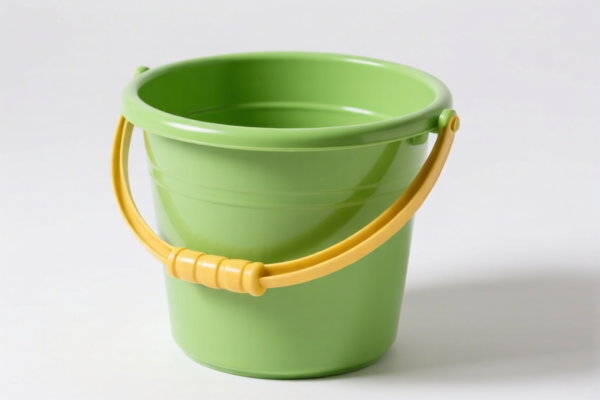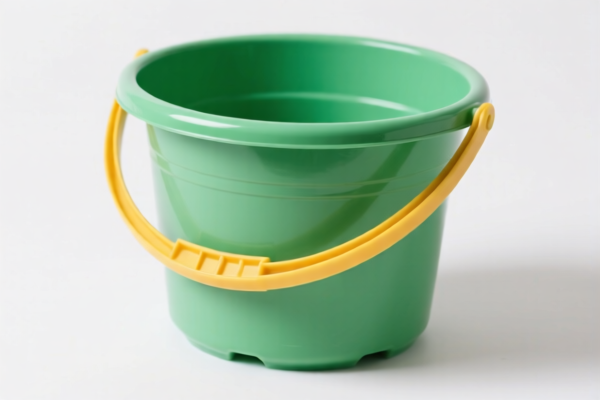| HS Code | Official Doc | Tariff Rate | Origin | Destination | Effective Date |
|---|---|---|---|---|---|
| 7323997000 | Doc | 60.3% | CN | US | 2025-05-12 |
| 7323999080 | Doc | 83.4% | CN | US | 2025-05-12 |
| 7326908688 | Doc | 82.9% | CN | US | 2025-05-12 |
| 3926901000 | Doc | 40.9% | CN | US | 2025-05-12 |
| 3926909989 | Doc | 42.8% | CN | US | 2025-05-12 |
| 3925900000 | Doc | 60.3% | CN | US | 2025-05-12 |
| 3925100000 | Doc | 61.3% | CN | US | 2025-05-12 |
| 6304996040 | Doc | 33.2% | CN | US | 2025-05-12 |
| 6304996020 | Doc | 33.2% | CN | US | 2025-05-12 |
| 6305900000 | Doc | 43.7% | CN | US | 2025-05-12 |
| 6305390000 | Doc | 45.9% | CN | US | 2025-05-12 |




Hanging Buckets for Garden Pots
Hanging buckets, also known as hanging planters or suspended planters, are containers used for growing plants while being suspended in the air. They offer a versatile solution for gardening, particularly in spaces with limited ground area.
Material
Hanging buckets are constructed from a variety of materials, each with its own advantages and disadvantages:
- Plastic: Lightweight, affordable, and available in numerous colors and designs. Susceptible to UV degradation and can become brittle over time.
- Metal: Durable and aesthetically pleasing, often with a rustic or vintage look. Can rust if not properly treated and may heat up in direct sunlight, potentially harming roots. Common metals include galvanized steel, iron, and aluminum.
- Ceramic/Terracotta: Provides a classic look and good drainage. Heavier than plastic or metal, requiring stronger support structures. Prone to cracking in freezing temperatures.
- Wood: Offers a natural aesthetic. Requires treatment to prevent rot and decay. Can be heavy when filled with soil and plants.
- Fabric (Grow Bags): Lightweight and breathable, promoting healthy root growth. Often made from polypropylene or other synthetic materials. May require more frequent watering.
- Coconut Coir: A sustainable option made from coconut husks. Lightweight and provides good drainage. Biodegradable.
Purpose
- Space Saving: Ideal for balconies, patios, and small gardens where ground space is limited.
- Aesthetic Appeal: Enhance the visual interest of outdoor or indoor spaces.
- Plant Protection: Elevate plants to protect them from ground-dwelling pests and diseases.
- Air Circulation: Promote better air circulation around plants, reducing the risk of fungal infections.
- Trailing Plant Display: Showcase trailing plants, allowing their foliage to cascade downwards.
Function
Hanging buckets function as self-contained growing environments. They typically consist of a container with drainage holes and a suspension system. The suspension system can include:
- Chains: Durable and adjustable, providing a classic look.
- Ropes: Lightweight and versatile, offering a natural aesthetic.
- Wires/Cables: Strong and discreet, suitable for modern designs.
- Hooks: Used to attach the suspension system to a support structure.
Usage Scenarios
- Balconies and Patios: Create a vertical garden on limited outdoor spaces.
- Porches and Verandas: Add visual interest and greenery to covered areas.
- Indoor Gardens: Bring plants indoors, utilizing hanging space to maximize light exposure.
- Green Walls: Create a living wall by suspending multiple buckets in a vertical arrangement.
- Kitchen Gardens: Grow herbs and vegetables in a convenient and accessible location.
Common Types
- Self-Watering Hanging Buckets: Equipped with a reservoir to provide a consistent supply of water to plants.
- Coco Coir Hanging Buckets: Made from coconut husks, offering a sustainable and breathable growing environment.
- Metal Hanging Buckets: Durable and aesthetically pleasing, often with a rustic or vintage look.
- Plastic Hanging Buckets: Lightweight and affordable, available in numerous colors and designs.
- Fabric Hanging Buckets (Grow Bags): Lightweight and breathable, promoting healthy root growth.
- Tiered Hanging Buckets: Feature multiple levels, allowing for the display of several plants in a single structure.
- Hanging Basket Liners: Used to contain soil within traditional hanging baskets, preventing soil loss and facilitating easy replanting.
Here's an analysis of potential HS codes for “garden pots hanging buckets,” based solely on the provided reference material:
- 3926.90.10.00: This code falls under Chapter 39: Plastics and articles thereof. Specifically, it covers Other articles of plastics and articles of other materials of headings 3901 to 3914: Other: Buckets and pails. This is a strong candidate if the garden pots and hanging buckets are made of plastic. The total tax rate is 40.9%.
- 3926.90.99.89: Also within Chapter 39: Plastics and articles thereof, this code represents Other articles of plastics and articles of other materials of headings 3901 to 3914: Other: Other. If the items are plastic but don’t fit specifically as buckets and pails, this could apply. The total tax rate is 42.8%.
- 7323.99.70.00: This code is under Chapter 73: Articles of iron or steel. It covers Table, kitchen or other household articles and parts thereof, of iron or steel; iron or steel wool; pot scourers and scouring or polishing pads, gloves and the like, of iron or steel: Other: Other: Not coated or plated with precious metal: Other: Cookingware. If the garden pots are made of iron or steel and are considered cookingware (e.g., for starting seeds), this could be relevant. The total tax rate is 60.3%.
- 7323.99.90.80: Also within Chapter 73: Articles of iron or steel, this code represents Table, kitchen or other household articles and parts thereof, of iron or steel; iron or steel wool; pot scourers and scouring or polishing pads, gloves and the like, of iron or steel: Other: Other: Not coated or plated with precious metal: Other: Other Other. If the items are iron or steel and don’t fit specifically as cookingware, this could apply. The total tax rate is 83.4%.
- 7326.90.86.88: This code falls under Chapter 73: Articles of iron or steel, specifically Other articles of iron or steel: Other: Other: Other: Other. This is a broad category for iron or steel articles. The total tax rate is 82.9%.
Important Considerations:
- Material is Key: The primary determinant of the correct HS code is the material of construction (plastic vs. iron/steel).
- Function: If the items are made of iron or steel, determining whether they are considered “cookingware” (7323.99.70.00) is important.
- Tax Rates: Note the significant difference in tax rates between plastic (around 40-43%) and iron/steel (60-83%).
- 2025.4.2 Tariff Changes: Be aware that a 30% additional tariff on steel and aluminum products will be implemented after April 2, 2025, potentially increasing the total tax rate for iron/steel items.
Customer Reviews
No reviews yet.